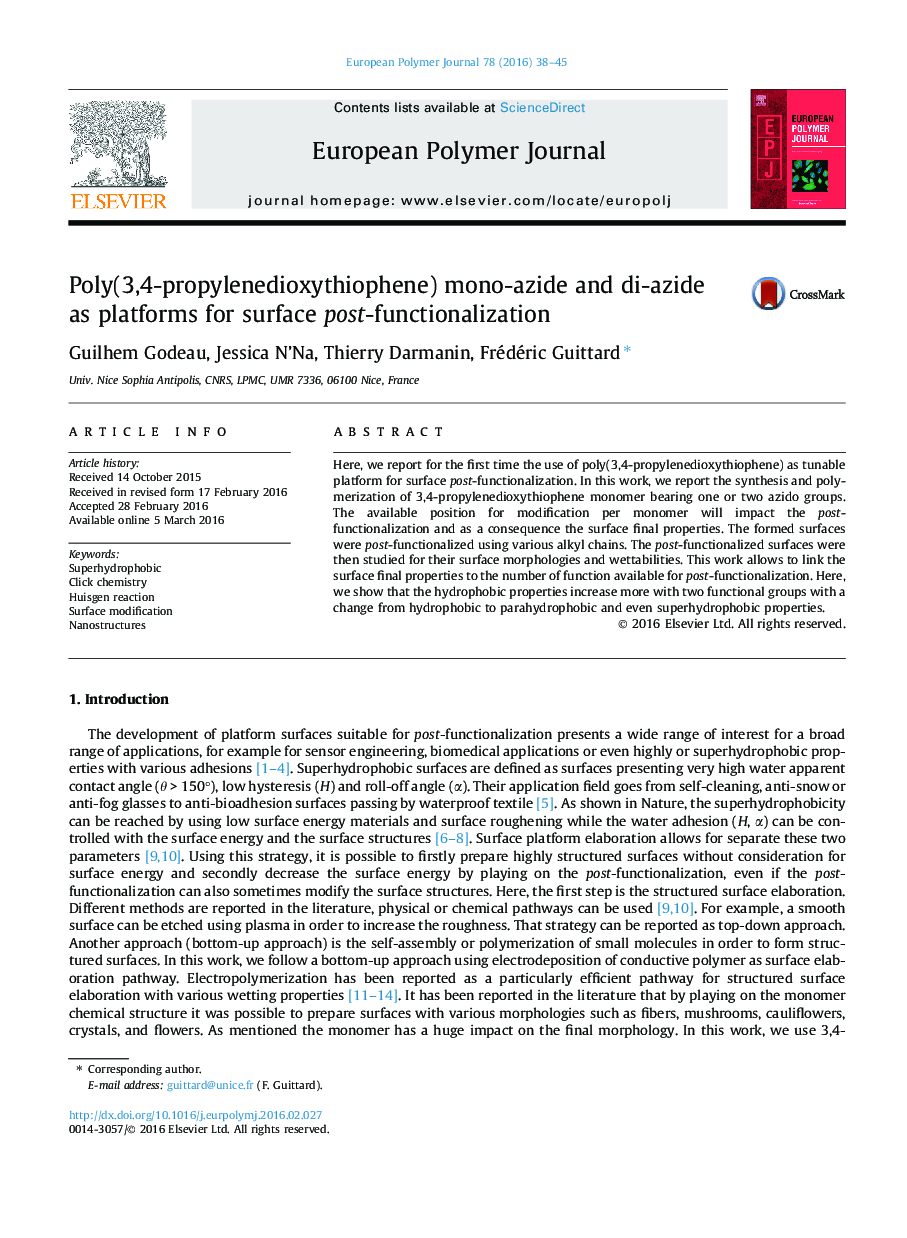| Article ID | Journal | Published Year | Pages | File Type |
|---|---|---|---|---|
| 1394649 | European Polymer Journal | 2016 | 8 Pages |
•Poly(3,4-propylenedioxythiophene) with mono-azide and di-azide groups.•Platform surfaces for click reactions.•Influence of the number of substituents on surface morphology and hydrophobicity.
Here, we report for the first time the use of poly(3,4-propylenedioxythiophene) as tunable platform for surface post-functionalization. In this work, we report the synthesis and polymerization of 3,4-propylenedioxythiophene monomer bearing one or two azido groups. The available position for modification per monomer will impact the post-functionalization and as a consequence the surface final properties. The formed surfaces were post-functionalized using various alkyl chains. The post-functionalized surfaces were then studied for their surface morphologies and wettabilities. This work allows to link the surface final properties to the number of function available for post-functionalization. Here, we show that the hydrophobic properties increase more with two functional groups with a change from hydrophobic to parahydrophobic and even superhydrophobic properties.
Graphical abstractFigure optionsDownload full-size imageDownload as PowerPoint slide
